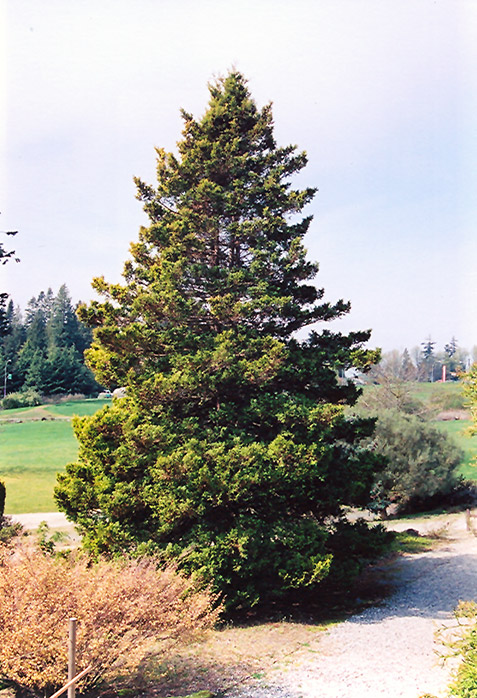Plume Falsecypress
Chamaecyparis pisifera 'Plumosa'
Height: 30 feet
Spread: 15 feet
Sunlight:
![]()
![]()
Hardiness Zone: 4a
Other Names: Japanese Falsecypress, Sawara Falsecypress
Description:
Like an open version of the species with more delicate, ferny foliage; a large tree for general texture contrast in the home landscape
Ornamental Features
Plume Falsecypress is primarily valued in the landscape for its distinctively pyramidal habit of growth. It has dark green evergreen foliage. The scale-like sprays of foliage remain dark green throughout the winter. The shaggy antique red bark adds an interesting dimension to the landscape.
Landscape Attributes
Plume Falsecypress is an open evergreen tree with a distinctive and refined pyramidal form. It lends an extremely fine and delicate texture to the landscape composition which can make it a great accent feature on this basis alone.
This is a relatively low maintenance tree. When pruning is necessary, it is recommended to only trim back the new growth of the current season, other than to remove any dieback. It has no significant negative characteristics.
Plume Falsecypress is recommended for the following landscape applications;
- Accent
- Vertical Accent
Planting & Growing
Plume Falsecypress will grow to be about 30 feet tall at maturity, with a spread of 15 feet. It has a low canopy, and should not be planted underneath power lines. It grows at a medium rate, and under ideal conditions can be expected to live for 70 years or more.
This tree does best in full sun to partial shade. It prefers to grow in average to moist conditions, and shouldn't be allowed to dry out. It may require supplemental watering during periods of drought or extended heat. It is not particular as to soil type, but has a definite preference for acidic soils. It is highly tolerant of urban pollution and will even thrive in inner city environments. Consider applying a thick mulch around the root zone in winter to protect it in exposed locations or colder microclimates. This is a selected variety of a species not originally from North America.
Disclaimer - This Plant Finder tool is an online resource representing many of the varieties that we carry over the course of the season, and is intended for informational purposes only. Inventory varies seasonally, so we cannot guarantee that every plant will be in stock at all times - please contact the store directly for current availability. It does not include our entire selection of plants, so be sure to visit our store to see varieties that may not be represented on this list.

